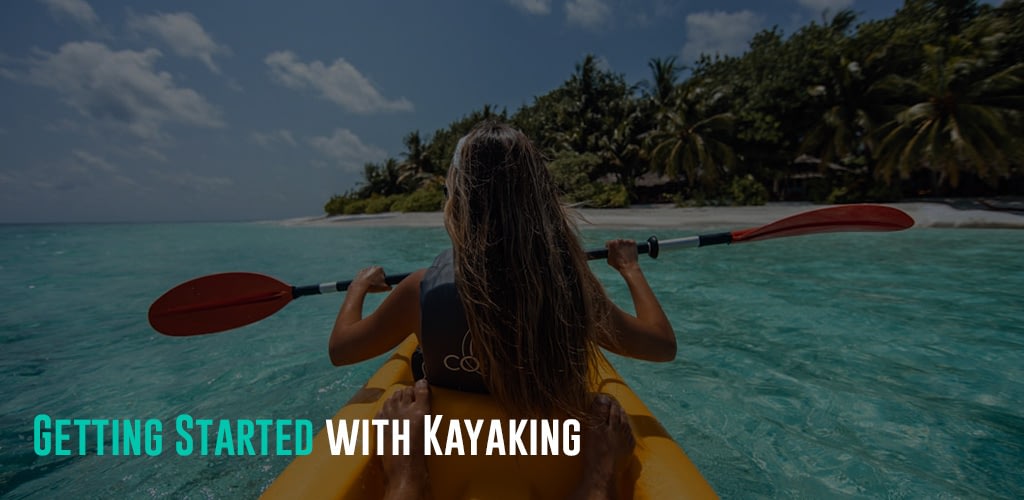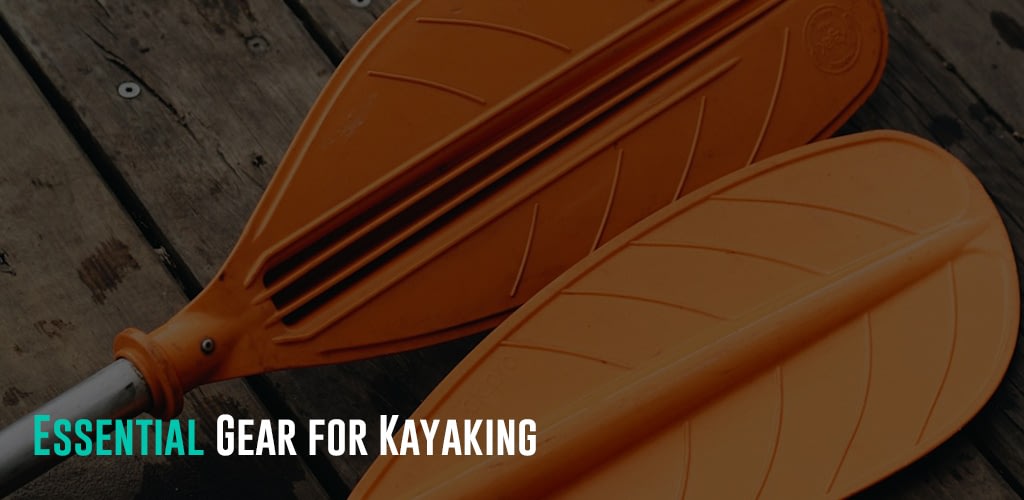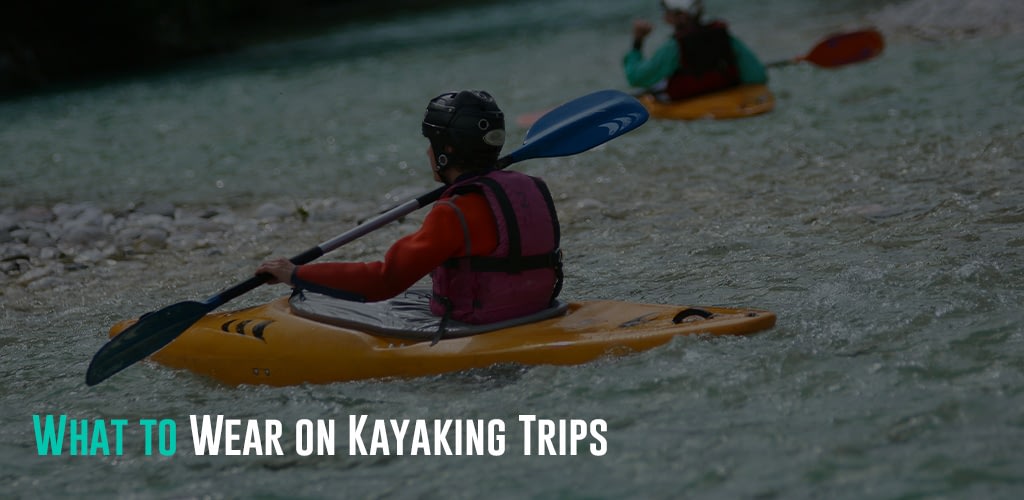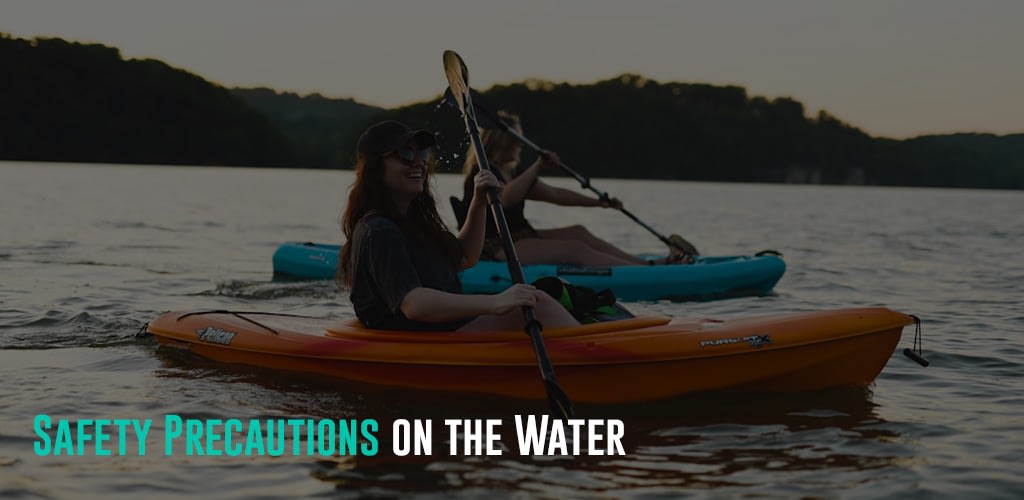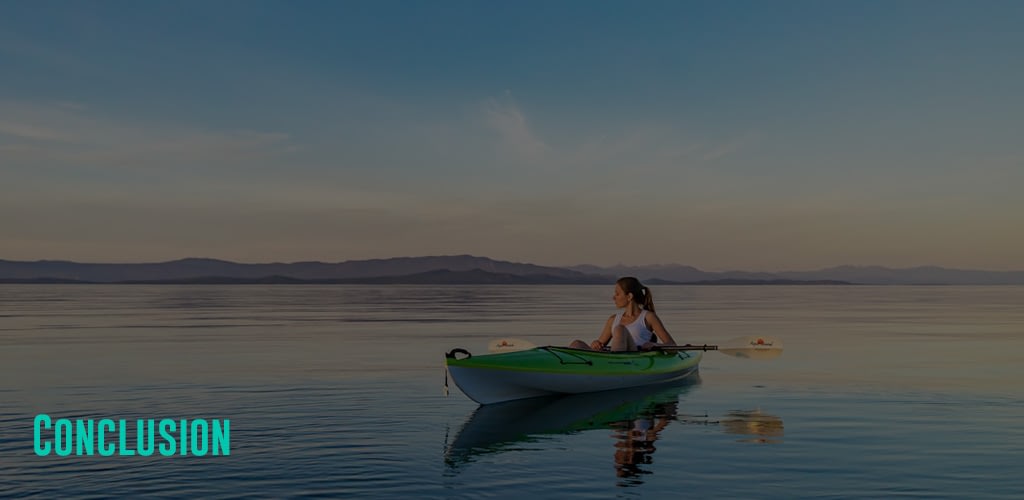Kayaking is a super fun water sport activity that lets you have a great time with your friends and family while exploring nature from a different perspective. If you’re thinking about trying kayaking for the first time, we’ve got some tips and tricks that are perfect for beginners. We want to make sure you have an awesome experience, from learning how to paddle to choosing the right kayak. So, if you’re up for some exciting adventures on the water, give kayaking a try! It’s a fantastic way to enjoy the outdoors and create awesome memories with the people you care about. Just follow these simple tips, and you’ll be all set for a fantastic kayaking journey!
Featured Image Source
Getting Started with Kayaking
If you’re just starting out with kayaking, here are some things to keep in mind:
- Find Good Spots: Look online or ask experienced kayakers about cool places near you to go kayaking. Pick a spot that matches your skill level and is safe and fun.
- Take a Kayaking Lesson: It’s a great idea to learn the basics. Join a beginner’s kayaking lesson or a guided tour with experienced instructors. They’ll teach you important stuff like how to paddle right and stay safe while making sure you have a good time.
- Start Easy: If you’re new to kayaking, begin in calm places like lakes or slow rivers. This lets you practice paddling in a safe space before trying more challenging waters.
- Learn Paddling Techniques: Knowing how to paddle and steer your kayak is super important. Practice moves like going forward, backward, turning, and controlling your kayak to make your kayaking adventures more enjoyable.
- Familiarize yourself with kayak terminology: Before you hit the water, get familiar with common kayak words like bow (front), stern (back), hatch (storage), cockpit (where you sit), and rudder (for steering). It helps when talking to other kayakers and understanding instructions.
Follow these steps, and you’ll soon feel confident and have a blast exploring the wonders of kayaking!
Choosing the Right Kayak
Choosing the right kayak is super important for a comfy and enjoyable time on the water. Here’s what to consider when selecting one:
- Know Your Style: Decide what type of kayaking you want to do—is it just for fun, long trips, or tackling whitewater? Different types of kayaking need different kinds of kayaks, so figure out what suits you.
- Kayak size and weight capacity: Match the size and weight capacity of the kayak to your own size and how you plan to use it. Bigger folks might need a wider and longer kayak for stability and space.
- Sit On Top or Inside: Choose between sitting on top of the kayak or inside it. Sit-on-top kayaks are easier for beginners, offering stability and easy entry. Sit-inside kayaks are better for colder weather and provide more protection.
- Stability vs. Maneuverability: If you’re just starting, you probably want a stable kayak. Look for wider hulls or flat bottoms. But keep in mind that super-stable kayaks might not be as easy to steer. Find a balance based on your skills and plans.
- Test it Out: If you can, try different kayaks before buying. Many places rent kayaks, so you can see how they feel and perform.
Remember, Choosing a kayak is personal, so take your time, do some research, and get advice to find the perfect one for you.
Essential Gear for Kayaking
Staying safe and having fun while kayaking means having the right gear. Here’s what you need:
- Life Jacket (PFD): Everyone, no matter how good a kayaker you are, needs a comfy and Coast Guard-approved life jacket. It’s a must for safety.
- Paddle: Get a good paddle that fits you well. Think about your height and how you like to paddle. A good paddle makes kayaking easier and more fun.
- Safety Whistle: Carry a whistle or something loud. It helps if you need to get attention in an emergency or talk to other kayakers.
- Bilge Pump or Sponge: These are handy for getting rid of extra water inside your kayak from waves or splashing.
- Navigation Tools: Depending on where and how long you’re kayaking, think about tools like a compass, waterproof map, or GPS. They make sure you find your way back.
- Dry Bags: Keep your stuff safe from water. Put your phone, extra clothes, snacks, and first aid kit in waterproof bags or containers.
Always remember, safety comes first. Don’t skip these essentials when you’re heading out for a kayaking adventure.
What to Wear on Kayaking Trips
Make sure you pick the right clothes when you go kayaking to stay comfy and safe. Here’s what to wear:
- Quick-drying clothes: Choose stuff made of materials like polyester or nylon. Don’t go for cotton because it stays wet and can make you feel cold.
- Layer up: Wear different layers for changing weather. Start with a base layer that takes away sweat, add more layers if it’s cold, and wear something waterproof or windproof on top to stay dry.
- Footwear: Use water shoes, sandals, or neoprene booties for grip and comfort. Don’t go for heavy hiking boots—they’ll drag you down if you fall in the water.
- Sunglasses and hats: Wear polarized sunglasses to shield your eyes from the sun’s glare. A hat with a brim will keep your face and eyes safe and help you stay cool.
- Sunscreen: Put on water-resistant sunscreen with a high SPF on all the exposed parts of your body. The sun can be pretty strong on the water.
With the right clothes, you’ll have a great time and stay safe on your kayaking trips.
Tips for First-Time Kayakers
Starting your first kayaking adventure is super exciting, but it can also feel a bit nerve-wracking. Here are some easy tips to make sure you have a great and safe time on the water:
- Short Trips First: Begin with short kayaking trips to get used to it. As you feel more confident, you can make your trips longer and more challenging.
- Learn Getting In and Out: Practice getting into and out of your kayak safely. Try it from different spots, like a dock or shallow water. It’ll make you feel more comfortable and less likely to tip over.
- Know Wet Exit and Self-Rescue: Learn how to get out of your kayak if it flips in the water. Also, practice getting back in, either by yourself or with help. It’s a handy skill to have.
- Kayak with a buddy or a group: It’s more fun and safer to kayak with someone else. If something unexpected happens, having a buddy around can be really helpful.
- Check the weather and tides: Before you go out, check the weather and tide predictions. Avoid kayaking in extreme weather, strong currents, or high winds—it can make your trip tough and risky.
- Stay Hydrated and Snack Up: Bring enough water and snacks to keep you fueled and hydrated. Paddling can make you thirsty, especially in warm weather.
- Respect nature: Watch wildlife from a safe distance and don’t disturb their homes. Follow the ‘Leave No Trace’ rule by taking all your trash with you and keeping the environment clean.
By following these easy tips, you’ll make sure your kayaking journey is not only safe but also a lot of fun.
Safety Precautions on the Water
Having a good time on the water is awesome, but safety should be the top priority. Here are some simple safety tips for kayaking:
- Check the weather: Before you go out, check the weather forecast. Avoid kayaking when the weather is bad, especially during thunderstorms or strong winds.
- Wear your PFD: Always wear your personal flotation device (PFD) and make sure it’s strapped on properly. It’s a lifesaver in emergencies or if you accidentally flip over.
- Stay aware: Keep an eye on what’s happening around you. Look out for other boats, swimmers, or anything that could be risky in the water. Keep a safe distance from other boats, and follow the rules.
- Know the rules: Learn the local rules for navigating the water. Understand buoy signs, know which side of the channel to stick to, and give way to bigger boats when needed.
- Be visible: Wear bright-colored clothes and use reflective tape on your kayak, especially if it’s getting dark. Use a white light or headlamp in low-light conditions to make sure others can see you.
- Tell someone your plans: Before you start kayaking, let someone know where you’re going and when you plan to be back. If something goes wrong, this information helps rescue teams find you.
- Be ready for emergencies: Carry important safety gear like a first aid kit, a whistle, signaling tools, and an extra paddle. Learn basic rescue techniques and CPR—these skills can be super helpful in emergencies.
Remember, being safe and staying alert are the keys to having a worry-free and fun kayaking experience!
Conclusion
Starting your kayaking journey as a beginner can be super exciting and fun. Just remember a few things: pick the right kayak, get the gear you need, wear the right clothes, follow safety rules, and keep learning. With all these in mind, you’ll be ready to paddle confidently and enjoy every moment on the water.
So, grab your paddle, enjoy the calm of nature, and have a blast exploring the awesome world of kayaking. And if you’re looking for more adventures beyond the water, consider exploring with Travel-Wise, our trip planner that helps you craft unforgettable journeys. Whether you’re a novice kayaker or an avid adventurer, Travel Wise ensures your trips are smooth, enjoyable, and suited to your preferences. Let us be your guide as you plan your next exciting trip. Take off on a journey filled with discovery, and let Travel-Wise make every moment memorable. Happy paddling!


